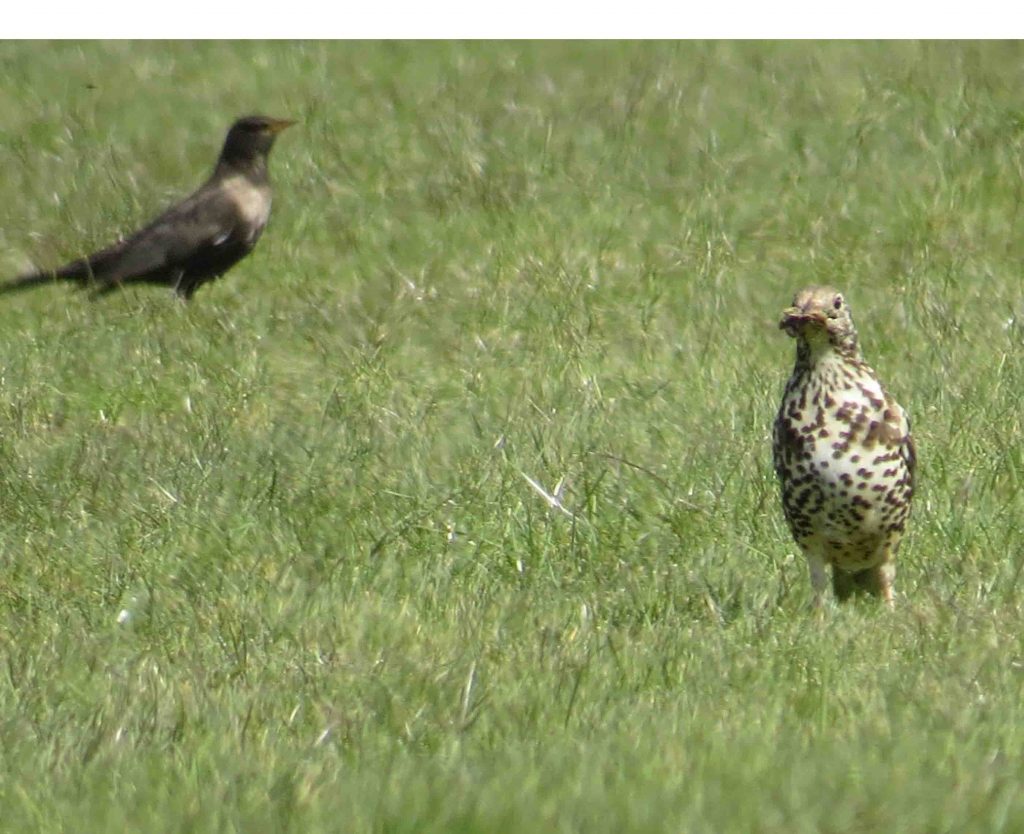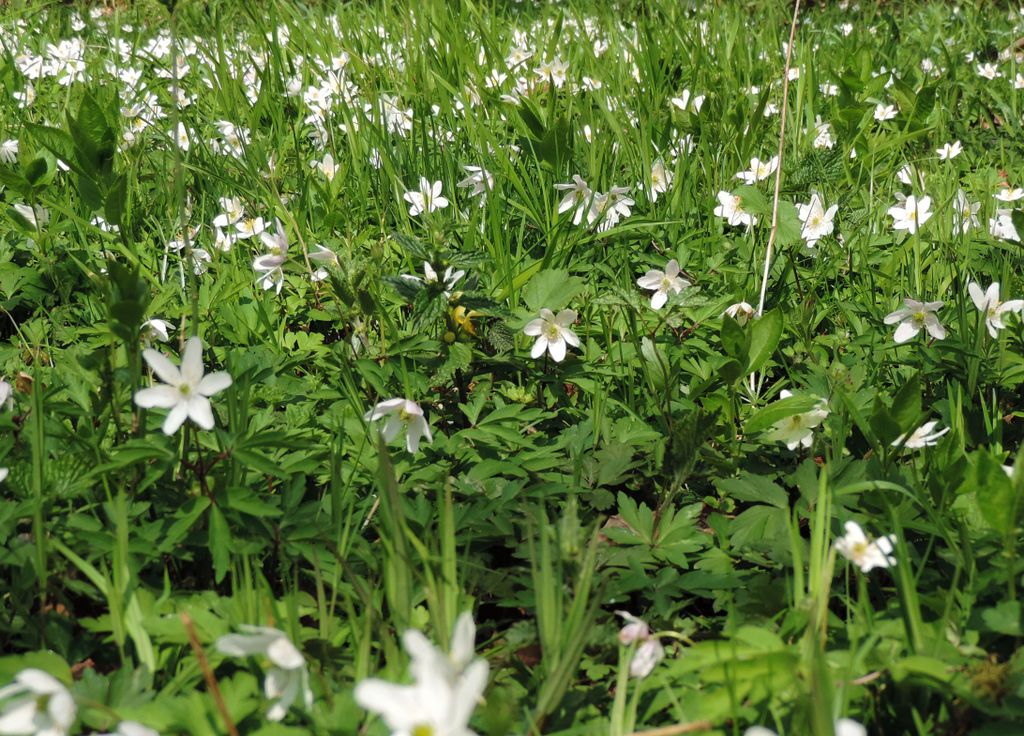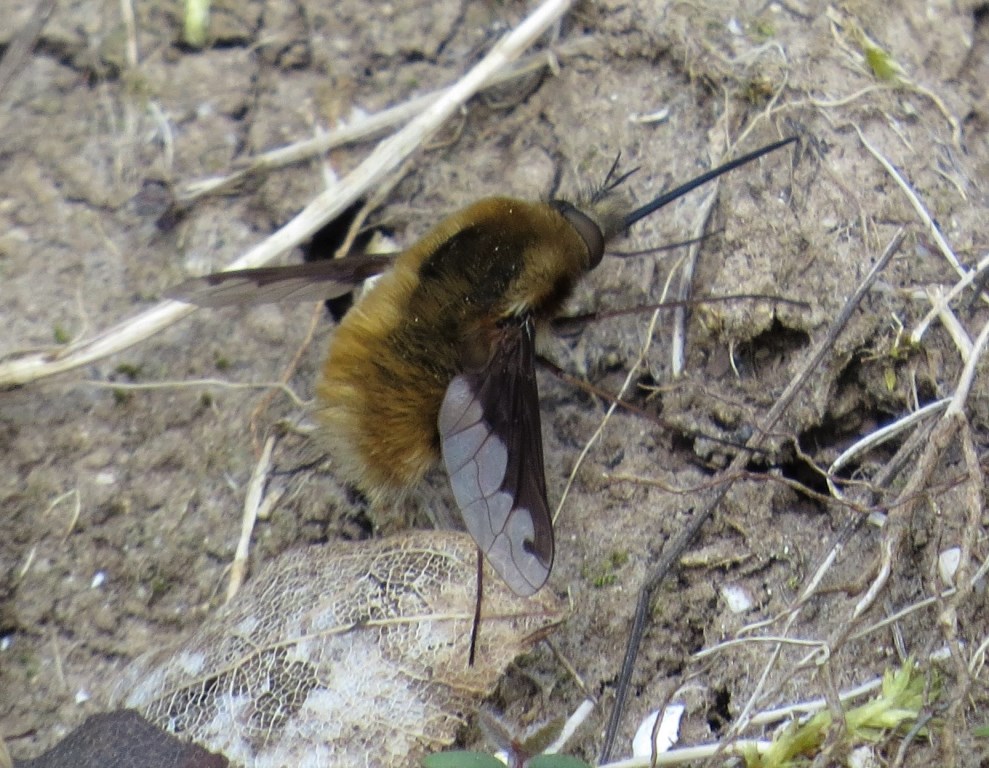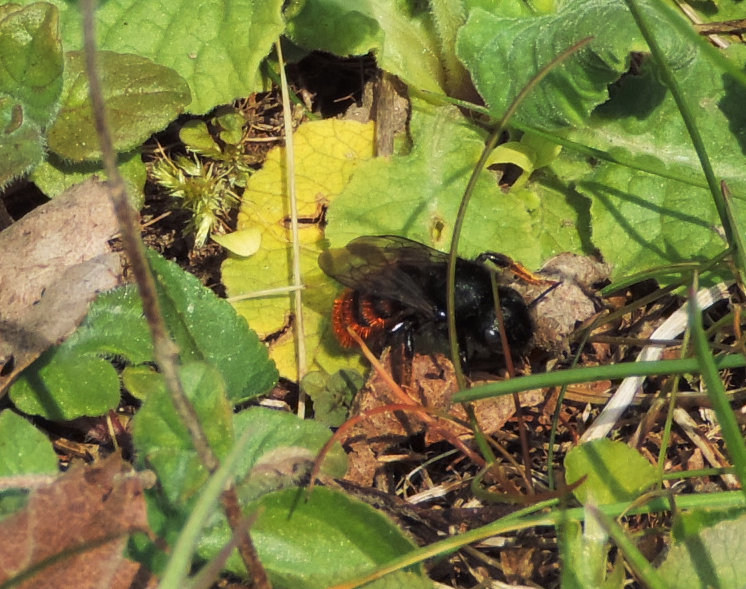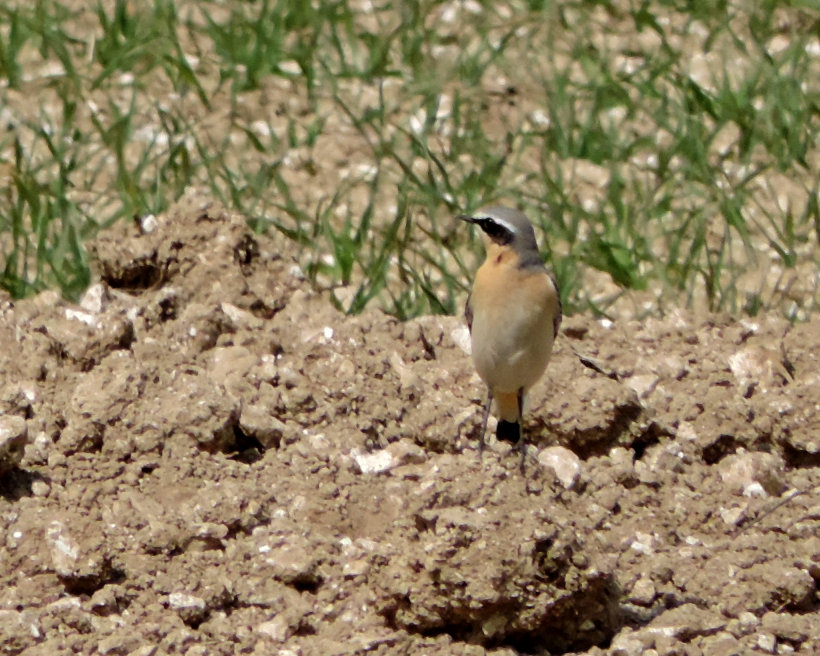Fiona Brown led a circular walk on the morning of Wednesday 21 April, starting from the Michael’s Field recreation ground in Hannington. Jan Haseler led a second group and two more members had joined the pre-walk a few days before. It was a repeat of a walk which had taken place the previous July, when it had been generally agreed that the area deserved a second visit when the spring woodland flowers would be at their best. After the pre-walk, Fiona had spotted a female Ring Ouzel on the football field adjacent to the car park. Much to everyone’s delight, it was still present on the Wednesday morning – though rather distant on the far side of the field. Also seen here was a significantly larger Mistle Thrush. It was a grey morning with a cold north-easterly wind, but as the day progressed, the cloud thinned and the sun appeared. The walkers set out north-eastwards along a fenced-off track between a grassy field and a field of winter wheat. Skylarks sang loudly overhead and occasionally dropped down into the wheat crop and several Linnets were also seen. The walk then continued south-eastwards on a track which led along the edge of Gaston Wood. The woodland floor was covered by a dense carpet of Bluebell leaves but there were few flowers to be seen. The next section of track cut through a stretch of woodland, where flowers included Wood Anemone, Wood-sorrel, Moschatel, Greater Stitchwort, Solomon’s-seal and both Early and Common Dog-violets. Both types of violet had pointed sepals, but the Early Dog-violets had a dark spur while the Common Dog-violets had a pale notched spur. Blackcaps were singing in the background. The track continued beside a field which had been planted with a mixture of clovers and vetches. Sun Spurge and Field Madder were found in the field margin and two Hares ran across the far side of the field. A shrew was heard, squeaking and moving about in the undergrowth beside the track to Balstone Farm. The walk continued southwards along a quiet lane towards Ibworth. Blackthorn blossom was densely white in the hedgerows, the first flowers of Wayfaring-tree were seen and there was an attractive line of cherry trees, covered in blossom, which had been planted as a memorial. The next section of the route followed a sunken trackway down through a narrow belt of woodland. At first, the ground cover was dominated by Dog’s Mercury, with abundant Early Dog-violet along the lower bank. Then Wood Anemone, Yellow Archangel, dense patches of Pignut, Solomon’s-seal and Moschatel began to appear, although surprisingly there were very few Bluebells. Towards the bottom of the hill, there were extensive excavations of the Chalk, presumably by Badgers. The walk continued along a footpath through Warren Bottom Copse. To the right of the path, the woodland floor was white with drifts of Wood Anemones with a few spikes of Solomon’s-seal. There were more Early Dog-violets, a few Primroses and a sparse covering of Bluebells. This prompted a debate as to why Bluebells were dominant in some of the woods and copses but scarce or absent in others. The age of the woodlands and their history of grazing or trampling by animals were considered. The path led to the wide ride with fine chalk grassland which had been the high-point of the previous summer’s walk. Cowslips were plentiful and the turf was dotted with Hairy Violets. These had blunt sepals while the Dog-violets of the woodland had had pointed sepals. The Cowslips were being visited by Dark-edged Bee-flies and a selection of bees. An attractive ginger and black bee was later identified from a photograph as a Red-tailed Mason Bee Osmia bicolor. Several Yellowhammers were feeding on grain spilled from pheasant feeders. The final part of the walk was a long slow climb along a footpath beside big arable fields. A dense blue carpet of fully-out Bluebells covered the ground in a small copse next to the path and two Marsh Tits worked busily through the tops of a small copse-edge tree. Brimstone and Orange-tip butterflies were patrolling along the sheltered woodland edge in the strengthening sunshine and Peacocks were basking on the ground. Several Small Tortoiseshells and a single Green-veined White were also seen. A Kestrel circled over the field to the south. The path led through an open gateway into the last of the big arable fields, where four Wheatears were flitting around on the bare ploughed area between the path and the crop. The path led back to Hannington, where some of the group stayed for lunch in the garden of The Vine pub.
Pictures by Fiona Brown and Rob Stallard

